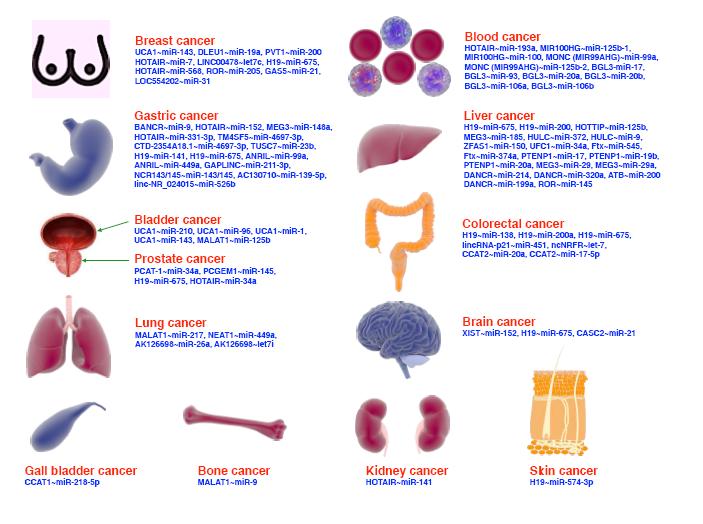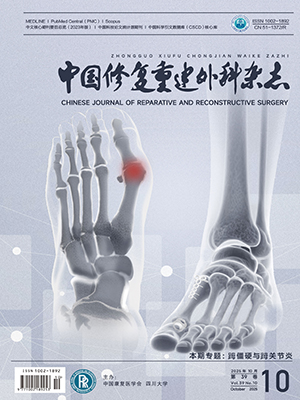| 1. |
Wei W, Dai H. Articular cartilage and osteochondral tissue engineering techniques: Recent advances and challenges. Bioact Mater, 2021, 6(12): 4830-4855.
|
| 2. |
Tsiklin IL, Shabunin AV, Kolsanov AV, et al. In vivo bone tissue engineering strategies: Advances and prospects. Polymers (Basel), 2022, 14(15): 3222. doi: 10.3390/polym14153222.
|
| 3. |
Chen R, Pye JS, Li J, et al. Multiphasic scaffolds for the repair of osteochondral defects: Outcomes of preclinical studies. Bioact Mater, 2023, 27: 505-545.
|
| 4. |
Dimitriou R, Jones E, McGonagle D, et al. Bone regeneration: current concepts and future directions. BMC Med, 2011, 9: 66. doi: 10.1186/1741-7015-9-66.
|
| 5. |
Keller M, Kastenberger T, Anoar AF, et al. Clinical and radiological results of the vascularized medial femoral condyle graft for scaphoid non-union. Arch Orthop Trauma Surg, 2020, 140(6): 835-842.
|
| 6. |
张凯, 戚彩, 谢峻, 等. 带血管的股骨内侧髁骨软骨嵌合组织瓣修复跖骨头复合组织缺损一例. 中华显微外科杂志, 2021, 44(2): 232-234.
|
| 7. |
Scampa M, Mégevand V, Martineau J, et al. Medial femoral condyle free flap: A systematic review and proportional meta-analysis of applications and surgical outcomes. Plast Reconstr Surg Glob Open, 2024, 12(4): e5708. doi: 10.1097/GOX.0000000000005708.
|
| 8. |
Paley D, Catagni MA, Argnani F, et al. Ilizarov treatment of tibial nonunions with bone loss. Clin Orthop Relat Res, 1989(241): 146-165.
|
| 9. |
潘达德, 顾玉东, 侍德, 等. 中华医学会手外科学会上肢部分功能评定试用标准. 中华手外科杂志, 2000, 16(3): 130-135.
|
| 10. |
Kitaoka HB, Alexander IJ, Adelaar RS, et al. Clinical rating systems for the ankle-hindfoot, midfoot, hallux, and lesser toes. Foot Ankle Int, 1994, 15(7): 349-353.
|
| 11. |
Collins NJ, Misra D, Felson DT, et al. Measures of knee function: International Knee Documentation Committee (IKDC) Subjective Knee Evaluation Form, Knee Injury and Osteoarthritis Outcome Score (KOOS), Knee Injury and Osteoarthritis Outcome Score Physical Function Short Form (KOOS-PS), Knee Outcome Survey Activities of Daily Living Scale (KOS-ADL), Lysholm Knee Scoring Scale, Oxford Knee Score (OKS), Western Ontario and McMaster Universities Osteoarthritis Index (WOMAC), Activity Rating Scale (ARS), and Tegner Activity Score (TAS). Arthritis Care Res (Hoboken), 2011, 63 Suppl 11(0 11): S208-28. doi: 10.1002/acr.20632.
|
| 12. |
Zhou L, Gjvm VO, Malda J, et al. Innovative tissue-engineered strategies for osteochondral defect repair and regeneration: Current progress and challenges. Adv Healthc Mater, 2020, 9(23): e2001008. doi: 10.1002/adhm.202001008.
|
| 13. |
Yang J, Zhang YS, Yue K, et al. Cell-laden hydrogels for osteochondral and cartilage tissue engineering. Acta Biomater, 2017, 57: 1-25.
|
| 14. |
Hurst JM, Steadman JR, O’Brien L, et al. Rehabilitation following microfracture for chondral injury in the knee. Clin Sports Med, 2010, 29(2): 257-265.
|
| 15. |
Hinckel BB, Gomoll AH. Autologous chondrocytes and next-generation matrix-based autologous chondrocyte implantation. Clin Sports Med, 2017, 36(3): 525-548.
|
| 16. |
Thomas AC, Hubbard-Turner T, Wikstrom EA, et al. Epidemiology of posttraumatic osteoarthritis. J Athl Train, 2017, 52(6): 491-496.
|
| 17. |
Sakai K, Doi K, Kawai S. Free vascularized thin corticoperiosteal graft. Plast Reconstr Surg, 1991, 87(2): 290-298.
|
| 18. |
Silva GB, Vellosa MT, Cho AB, et al. Medial femoral condyle corticoperiosteal flap: Anatomic study. Acta Ortop Bras, 2018, 26(3): 179-182.
|
| 19. |
Andrade RG, Bufáiçal HG, Oliveira LA, et al. Contribution to the anatomical study of the corticoperiosteal flap of the medial femoral condyle. Rev Bras Ortop, 2015, 44(5): 404-407.
|
| 20. |
Oh C, Pulos N, Bishop AT, et al. Intraoperative anatomy of the vascular supply to the medial femoral condyle. J Plast Reconstr Aesthet Surg, 2019, 72(9): 1503-1508.
|
| 21. |
高华. 国人正常股骨内外侧髁股胫接合线曲率半径的研究. 南京: 南京中医药大学, 2009.
|
| 22. |
姚玲, 李川, 李军, 等. 数字化技术测量掌指关节部分数据及分析. 西南国防医药, 2020, 30(10): 911-914.
|
| 23. |
张树明, 丁自海, 张成进, 等. 吻合血管的跖骨头移植替代月骨的应用解剖. 中华显微外科杂志, 1998, 21(1): 46-48.
|
| 24. |
刘育杰, 于龙华, 任胜全, 等. 嵌合游离股骨内侧髁骨筋膜瓣修复手或足部长段骨及软组织复合组织缺损. 中华显微外科杂志, 2021, 44(5): 521-525.
|
| 25. |
Guzzini M, Lanzetti RM, Perugia D, et al. The treatment of long bones nonunions of upper limb with microsurgical cortico-periosteal free flap. Injury, 2017, 48 Suppl 3: S66-S70.
|
| 26. |
Hachisuka H, Ishibashi S, Shimose S, et al. Vascularized origami medial femoral condyle flap for finger joint reconstruction. Plast Reconstr Surg, 2023, 152(6): 1297-1301.
|
| 27. |
Katz RD, Parks BG, Higgins JP. The axial stability of the femur after harvest of the medial femoral condyle corticocancellous flap: a biomechanical study of composite femur models. Microsurgery, 2012, 32(3): 213-218.
|
| 28. |
Guzzini M, Lupariello D, Argento G, et al. Vascular and bone regeneration of the donor site after corticoperiosteal flap from the medial femoral condyle. Hand (N Y), 2022, 17(2): 366-372.
|




